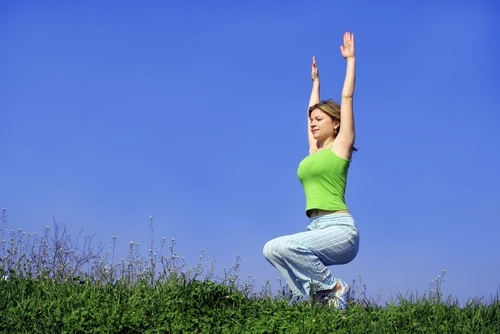Study: Yoga Therapy Improves Posture Stability and Balance

Yoga isn’t just helpful therapy for back pain. New research shows that yoga exercises for the back improves posture stability and balance and may lower the risk of trips and falls, which often lead to serious injury in people over the age of 65.
In the nine-week study on the benefits of yoga therapy for improving balance and postural stability, researchers at the School of Podiatric Medicine at Temple University in Philadelphia examined whether a nine-week program of Iygengar yoga could help improve the postural stability and balance of 24 elderly females. After the study period, participants showed improvements on several factors related to their ability to balance: they had a faster stride, increased flexibility in the lower part of the body and an improved single-leg stance.
Falls Are a Little Recognized Health Risk
The study is important, because loss of posture stability and reduced ability to balance are related to trips and falls. The older we get, the more we tend to lose our postural stability and ability to balance, and the greater the chance that that little slips and trips will turn into a bad fall and lead to serious injury and even death.
Thirty percent of individuals over the age of 65 fall every year. According to the Centers for Disease Control and Prevention, trips and falls are a significant health risk for people above the age of 65; they are the leading cause of deaths from injury in seniors. For the elderly, falls may lead to fatal brain injury. In addition, at least 95 percent of hip fractures among older adults are caused by falls. Hip fractures are a serious health concern for people above 65. In the best case, a hip fracture undermines the ability to take care of oneself; in worst cases it leads to death. As much as one in three men in this age group die within one year after sustaining a hip fracture; for women the risk is somewhat lower, but still almost one in five. The rates of fall-related deaths and hospitalization for hip fractures are on the rise, as are deaths from serious brain injuries.
Who Is at Risk for Trips and Falls?
Some people are at higher risk for falling. Women are at higher risk, as are white people. You are also at higher risk if you have had a previous fall, have vision problems, or take more than four medications or use psychoactive medications. In addition weakness in the lower body and other physical limitations predispose people for trips and falls.
The idea behind the study was that yoga for the back, by promoting stretching, strength training, and overall awareness of posture and movement, would improve health and wellness in older adults and reduce the risk of falling. At the end of the nine weeks, the study participants enrolled in the Iyengar-based yoga therapy program showed improved posture stability and balance in a number of ways. They had a faster stride, they increased the flexibility in the their legs, and improved their single-leg stance. The participants also reported increased confidence in walking and balance. In addition, the researchers noticed that pressure was distributed differently on the bottom of the foot, another factor which helps maintain balance. According to Jinsup Song, D.P.M., Ph.D., the Director of the Gait Study Center at Temple University School of Podiatric Medicine, the people in the yoga therapy group gained more confidence when standing and walking and were more aware of their body posture. The results of this preliminary study are expected to lead to a larger study on how yoga may improve balance and postural stability, and prevent falls.



